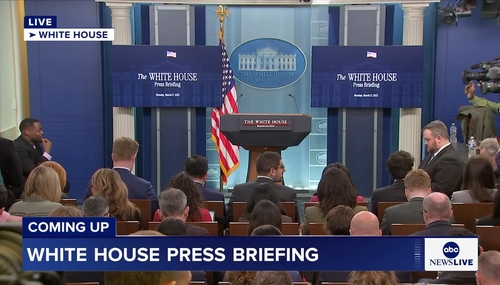Sunday’s Washington Post Magazine put this on the cover: “Teaching Ferguson: How Professors Are Using Racial Flashpoints in the Classroom.” Yes, “[Trayvon] Martin, Ferguson and their galvanizing ripple effects have inspired universities across the country to incorporate racially charged tragedies into their curricula, sometimes in novel ways.”
 The story’s cover is a young black student from the University of Maryland named Vaughn Midder, who is playing Trayvon Martin (and others) in a play:
The story’s cover is a young black student from the University of Maryland named Vaughn Midder, who is playing Trayvon Martin (and others) in a play:
The U-Md. play, Collidescope: Adventures in Pre- and Post-Racial America, ran in November. In addition to Trayvon Martin, Vaughn Midder played several roles in the gender- and race-bending play. He was a slave, a Southern belle who owned slaves, a 7-year-old in a low-income family and Paul Robeson. The last scene, which included the entire multiracial cast, was of a memorial for Brown. Actors carried candles, flowers, stuffed animals and signs saying “RIP.” One actress, a black woman, was so overwhelmed she began sobbing after she left the stage.
Some of the course work listed by Lisa Grace Lednicer are merely making students think: “An assistant professor of English and film studies at Hampton University in Virginia has told her students to produce documentaries exploring their points of view about Brown, Martin and other young black men, connecting their deaths to the civil rights movement.”
Some of these ideas sound useful: “At San Francisco State University, a criminal justice lecturer used the grand jury transcript in the Ferguson case and unedited footage of Eric Garner’s fatal arrest in Staten Island to teach his students, many of whom are headed for careers in law enforcement, about the importance of original source material in drawing conclusions about a nationally publicized incident.”
The "nationally publicized" information doesn't rely on original source material when there's racial agitation to create.
And: “Catholic University law professor Clifford Fishman is using the cases to teach the pros and cons of grand juries. Last semester, he argued in class that the grand jury perhaps was right to not indict the officer who killed Brown, but wrong to not indict the officer who killed Garner.”
But others sound like propaganda exercises, using the classroom to foment leftist activism and protest against America as a terribly racist country, and somehow equate Selma and Ferguson, as if both were equally evocative of segregationism:
A postdoctoral fellow at Washington University in St. Louis is teaching a new class called “The Politics of Black Criminality and Popular Protest,” in which he discusses the transition from slavery to the formal and informal systems of criminal justice that have affected blacks throughout history. (The university’s library is partnering with other St. Louis-area universities and organizations to archive the outpouring of community- and media-generated content after Ferguson.)
“There is a long history of segregation and control and policies that are meant to maintain racial and class boundaries,” said Douglas Flowe, the postdoc.
Flowe, the son of a New York police officer, has heard the stories of the threats his father faced. But he said he also has been wrongly accused of transporting drugs when he was a college student.
“I don’t want to talk about Ferguson as some isolated event, but that it is part of a continuum,” he said. “If you’re under the impression that the forces that created issues of criminality aren’t as deep as they really are, it’s easy to have the perception that having a black president, and the advances of the civil rights movement, would simply be enough to right all the wrongs.”
Lednicer joined in the act of blurring Ferguson and Selma together without any acknowledgment of the nation’s progress on race:
Some law professors are struggling with how to talk to their students about Ferguson and Staten Island, said Georgetown Law professor Paul Butler. Butler, a former prosecutor, said he and many of his peers became attorneys because they were inspired by Thurgood Marshall and others who fought the battle for civil rights in the courts. Now, he said, many professors are less optimistic about the legal system’s potential to eliminate racial injustice.
Last month, at a workshop of the Society of American Law Teachers, Butler started thinking about how law professors in 1965 might have taught the march from Selma to Montgomery, Ala. “Would a law professor say, ‘On one hand, demonstrators are being beat up by police; on the other hand, they really should’ve gotten a permit’? To me, that even-handedness would miss the point,” he said. “In Selma, the teachable moment wasn’t about a permit; the moment was the courage of the marchers and how they changed the law. I don’t want this to be a Selma that I look back on and regret that I didn’t step up.”
The professor doesn't want to be even-handed on Ferguson; he prefers the one-sided propaganda about racial hatred, and wants to turn his students into leftists like himself.
On Thursday, the Post worried in a big front-page story that the Ferguson “moment” isn’t becoming a “movement.” A “broader critique” of racist America is fizzling:
The unrest generated by the deaths of Brown in Ferguson, Tamir Rice in Cleveland and Eric Garner in Staten Island may eventually become the first scene in a stirring saga of how a moment builds into a movement. Or it could end up as a cautionary tale about how a righteous activism born of traumatic incidents fizzles, the energy of dozens of new activist groups sapped by quotidian realities and the shortened attention spans of a society that expresses its political passions in Likes and tweets.
That’s right, blame “society” after the “unrest” is over.




